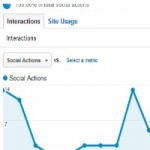A chance reading of an article in the Sydney Morning Herald got me thinking about changing demographics. While the article was specifically looking at the expected large numbers of seniors who will require aged care, it resonated with me how important it is for business owners to consider using demographic data.
What has happened in my children’s shoe market in the past couple of years is a case in point.
Firstly about 2 years ago we had a shortage size 9 shoes. Purchasing levels were in line with expectations but they were selling faster

use demographic data
than usual. Talking to customers they also said that it was hard to buy clothes in the correct size. It turns out there was a birthing bubble about 3 years prior which meant a greater demand at that time. The lag in supply is over 6 months to a year until we can adjust our ordering levels. My store is in New Zealand which has a population of a little over 4 million as as with most consumer products, large stocks are not held in the present economic conditions. For a few shoe brands there were stocks available in Australia which we could draw on, but only small quantities.
While we can now make allowances for this and order based on the expected sizes required as the children grow, but there are also external factors which could also affect us. This was highlighted in a big way the last couple of months. Suddenly our draw down stocks based in Australia are NIL. It appears that Australia has had their own little boom & wiped out the current winter supply.
Use demographic data to keep your small business one step ahead
Here’s an extract from the article to get you thinking:
The demographic shift has implications for small businesses’ marketing strategies and staffing, as well as bringing potential opportunities for providing services to a mature population.
The proportion of Australia’s population 65 years of age or older has grown from 8 per cent in 1970-71 to 13 per cent in 2001-02. In 40 years’ time, a quarter of the population will be aged over 65. The number of working-age people to support each retiree will fall from five people today to 2.7 in 2049-50.Read more click here
So the lesson to be learnt?
Keep up with the demographic and other data for the buyers of your products or services. Are you expecting changes due to an aging population, new technology, changes in the income levels of your customers, growth from new residential subdivisions in your local market, a new supermarket in the area that will bring in more customers, a new school being built.
Also, consider the supply chain lag. How long will it take for your suppliers to be able to provide stock? What about staffing?
Consider using demographic data that is up to date to keep you one step of changes to your customer base.
Thanks for stopping by. To receive posts like this and other small business information, tips, videos and opinions free in your email inbox every week, fill in the form on the right hand side







